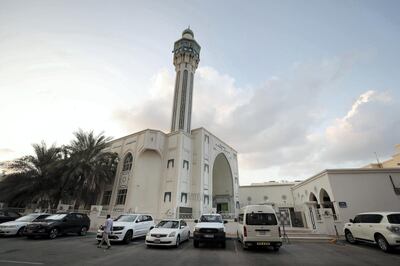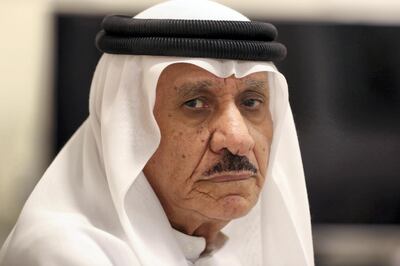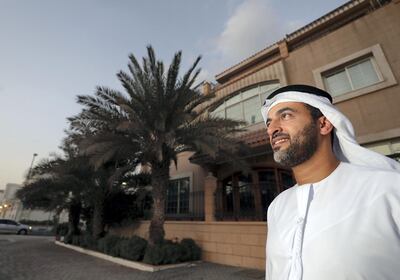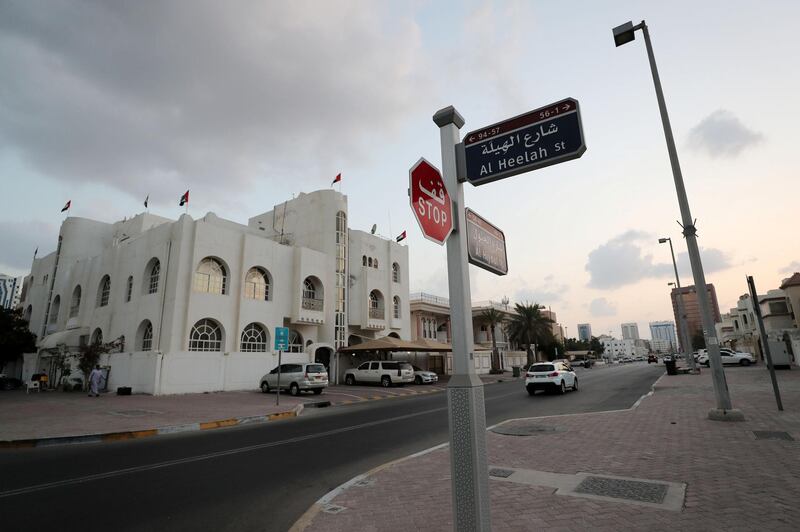The UAE is a patchwork of nationalities, religions and ethnicities. It is a place of tolerance and peaceful coexistence where mosques and churches have stood side-by-side for decades and a Hindu temple is also on its way.
Oasis Hospital in Al Ain, where Sheikh Mohamed bin Zayed, Crown Prince of Abu Dhabi and Deputy Supreme Commander of the UAE Armed Forces, was born, was opened by a missionary couple in 1960. Its walls are adorned with biblical verses and the holy text is placed on every bedside table.
But even before hospitals, churches and an influx of residents from all walks of life, the UAE was common ground for two groups of people who had been embroiled in a religious conflict dating back to the seventh century.
These days, for most, Madinat Zayed is Abu Dhabi’s main retail centre, a place that swarms with residents at nightfall in search of a bargain. But few know that the thin strip between Zayed the First Street (formerly known as Electra Road) and old Al Falah Street is an enclave for most of the UAE’s Shiite Muslims, known as the Baharna area.
The Baharna are an Emirati tribe of Shiite Muslims who moved to what would become the UAE in the 1800s from eastern Arabia but mainly Bahrain, hence “Baharna”. About 120 families moved there.
“From the beginning, we were part of the population and treated like everyone else. There never was any difference between anyone,” says Nasser Al Nowais, chairman and co-founder of Rotana Hotel Management Corporation, whose family lived in the area and is now in his seventies.
Resident Abdulla bin Jaffar has been living in the same two-storey house in Madinat Zayed since 1968. He is now in his eighties.

“Sheikh Zayed ruled in 1966 and one of the first things he did was remove our shanty tents on the coast and build us modern houses in the mainland,” Mr Bin Jaffar says.
Before the move, all Emiratis lived in houses of palm fronds and mud along the Corniche.
“So keen was Sheikh Zayed to keep Emirati families together that he moved each tribe to a specific location,” Mr Al Nowais says.
The Baharnas were moved to Madinat Zayed and the Romaithat, a well-known Emirati tribe, settled across from them.
“This is the original place for the Baharns,” Mr Bin Jaffar says. “This has always been my home; we might have spread out a little but this is the same house I’ve always lived in.”

Sixteen years after they moved, Sheikh Zayed compensated the families and asked them to temporarily move out of their houses, which were starting to crumble, while the buildings were renovated.
The street is divided into five blocks studded with about 40 houses, each flying the UAE flag from its roof.
Mr Bin Jaffar, like everyone in the area, knows all his neighbours. “The younger generation moved and got places outside Madinat Zayed but we are still here,” he says proudly.
On each side of the street are distinctive Shiite mosques and the "matam", where special rituals are carried out during holy months. Here Shiite Muslims have lived in peace, free from conflict or incident since before the unification of the Emirates.
"This area is extremely safe," Mr Bin Jaffar says.
While tension and even conflict exists between the two sects in countries such as Iraq, Syria and Lebanon, the UAE has been a safe haven for the Baharna.
"That would never happen here," says Abdullah Al Sayed, 40. His family has lived in the neighbourhood for decades, next door to the family of his future wife.

So close-knit are the Baharna that most marry their cousins, who coincidentally live on the same block.
“When it is time for us to get married, you don’t have to look far,” Mr Al Sayed says, laughing.
Even the corner shop has been a steadfast feature in the neighbourhood.
“I’ve been here since 1986,” says shop owner Kaniyan Kumaran, from India.

"I've been in the same spot and I've seen this area go from nothing but sand to the royal houses you see today," he says.
During months holy to Shiite Muslims, such as Muharram, Baharna roads are congested with cars and worshippers heading to the matam.
"You would rarely see this sight anywhere else in the world, but in the UAE this is always how it has been," Mr Al Nowais says. "Tolerance isn't a new catchphrase; it is who Emiratis are. It is Sheikh Zayed. It is the Rulers and the people. It is ingrained in the soil and in the air we breathe; it is the UAE."
*This article has been amended to correct the year the Baharna moved to the area that would become Abu Dhabi.






